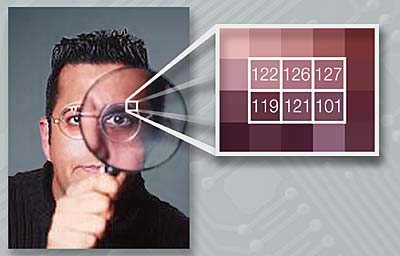Steganography and Digital Watermarking
From Computing and Software Wiki
Steganography and Digital Watermarking are both forms of information hiding where the context can be viewed as keeping the information a secret or making the information subtle respectively. Both these methods have been around for a long time, at least several centuries, however they have only gained worldwide popularity in the digital world since roughly the mid 1990s. With new technologies constantly emerging, these two methods have been used to prevent theft, prevent plagiarism, track, and hide secrets.
Contents |
History
The word steganography was derived from the Greek words steganos, which means "covered", and graphia, which means "writing".
The word watermark is thought to have been derived from the German word wassermarke and is termed as the marks were thought to have resembled the effects of water on paper.
Applications
Steganography and digital watermarking can be broken down into four different subcategories in which the existence of the technique is either known or unknown to the public along with the original file.

Covert watermarking is embedding a watermark related to the recipient of each copy of the file, but unaware that the watermark exists. Thus, if the file is leaked to third parties, the recipient who leaked the file can be traced. Covert steganography is embedding data unrelated to the original work. An overt watermark is when the presence of the watermark is known to others besides the creators, whether visually or told of the watermark. Overt steganography is similar to covert steganography in terms of the hidden information is unrelated to the signal in which it is embedded in. However with overt steganography, the information is only hidden to certain parties but visible to others, example timestamps.
Knowing the subcategories allows for the following possible applications for both steganography and digital watermarking. Some applications may use both techniques depending on the function required.
Steganography
Some applications of steganography are:
- Protection of Data Alteration
- Confidential Communication
- Media Database Systems
- Access Control
Digital Watermarking
Some applications that use digital watermarking are:
- Broadcast Monitoring
- Owner Identification
- Proof of Ownership
- Transaction Tracking
- Content Authentication
- Copy Control
- Device Control
- Legacy Enhancement
Properties
Models and Techniques
Steganography and digital watermarking are two different techniques, however they both share similar qualities. Both techniques follows the same basic model in which two inputs (a signal and the original file) go into an embedder. The signal corresponds to the digital watermark or the secret message and the embedder function contains an algorithm that will produce a watermaked file. The output from the embedder is than transmitted or recorded. The recorded file is than sent to a third party in which the possibility of a modification, whether malicous or not, could arise. The recorded file, modified or not, is than sent as input to a detector in which the algorithm tries to determine if the signal is present. If it is, the watermark or secret message can usually be extracted depending on the properties.
How Steganography Works
How Digital Watermarking Works
Countermeasures
See Also
External Links
Citations
References
--Ganv 20:14, 7 April 2009 (EDT)


